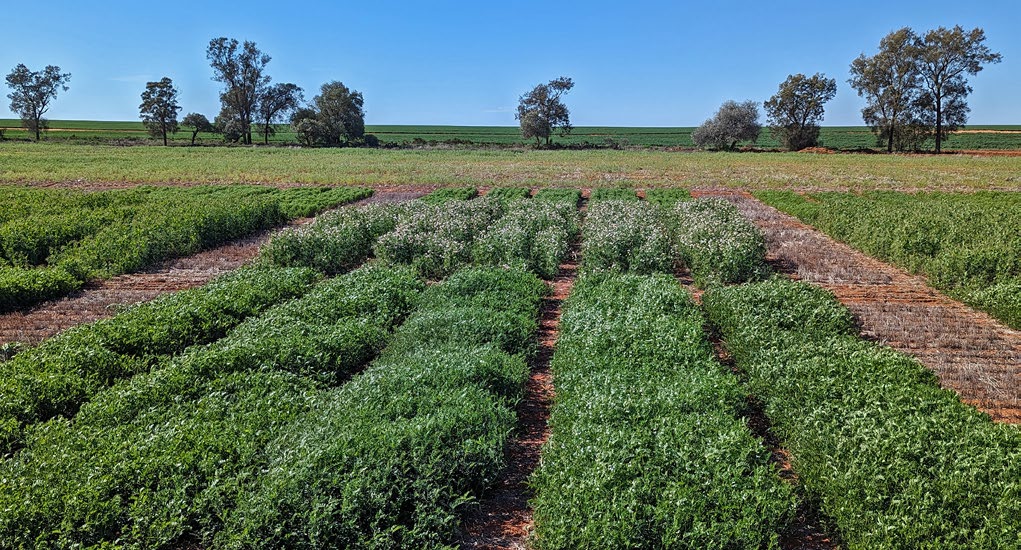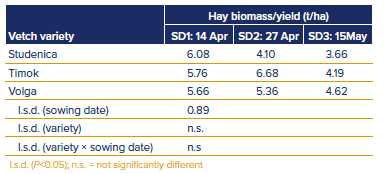Background
The Mallee pulse site in 2023 was on Petro Station, approximately 60 km north east of Mildura. A rain of 20 mm fell on 15 April, the day after planting the mid April sowing (SD1), which resulted in excellent germination and establishment for all three sowing dates.
Growing season rainfall (April–October) in 2023 was around 200 mm, however over 200 mm of summer rainfall was received in the previous fallow period, providing high levels of soil moisture prior to sowing.
The soil is a sandy loam topsoil with clay content gradually increasing to a clay loam texture in the sub-soil. The soil is well suited to growing pulses as it is well drained and has a neutral to alkaline pH. Indicators of soil fertility were generally good while subsoil constraints were minimal in the 70–100 cm deep layer.

Rainfall and temperature
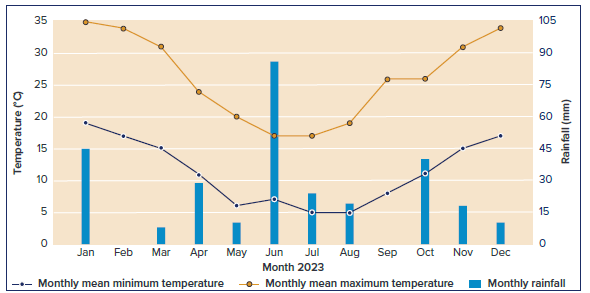
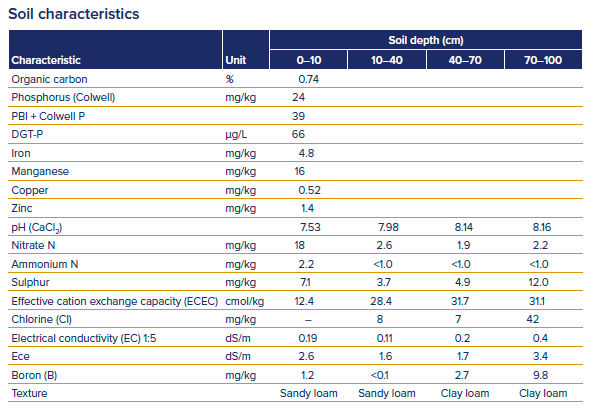

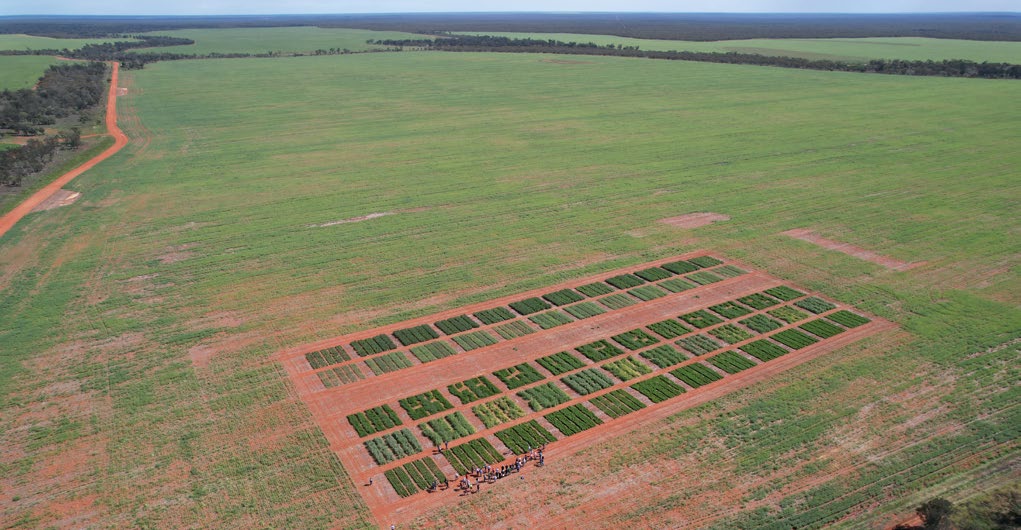
Pulse species and variety comparison at three sowing dates
Key findings
Lentil
- The highest lentil grain yield in the trial was from GIA Thunder sown mid April (1.9 t/ha). There was no difference in grain yield between lentils sown mid to late April (SD1 and SD2), however delaying sowing to mid May (SD3) reduced grain yield by 0.3–0.4 t/ha.
- Grain yield of GIA Thunder was 15% higher than PBA Hallmark XTA and PBA Highland XTA.
- Peak biomass of lentils sown at the first two sowing times was almost 6 t/ha, double the dry matter produced by lentils sown in mid May.
Field Pea
- Field pea produced the highest grain yield of all pulse crops with up to 2.5 t/ha from a mid to late April sowing time.
- The grain yield of field pea was affected by sowing time but varieties were not significantly different. The yield of field peas sown mid–late April (SD1 and SD2) was 0.6–0.7 t/ha higher than when sown mid May.
- Peak biomass of field peas sown at SD1 and SD2 was 7.99 t/ha and 7.38 t/ha, respectively. This was more than 3 t/ha higher than the field pea biomass produced from the mid may (SD3) sowing.
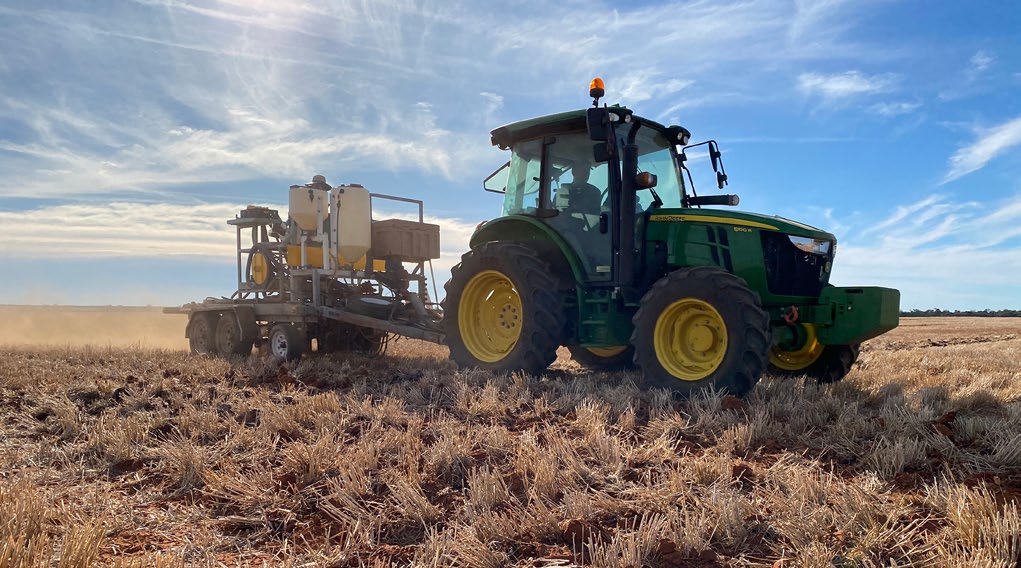
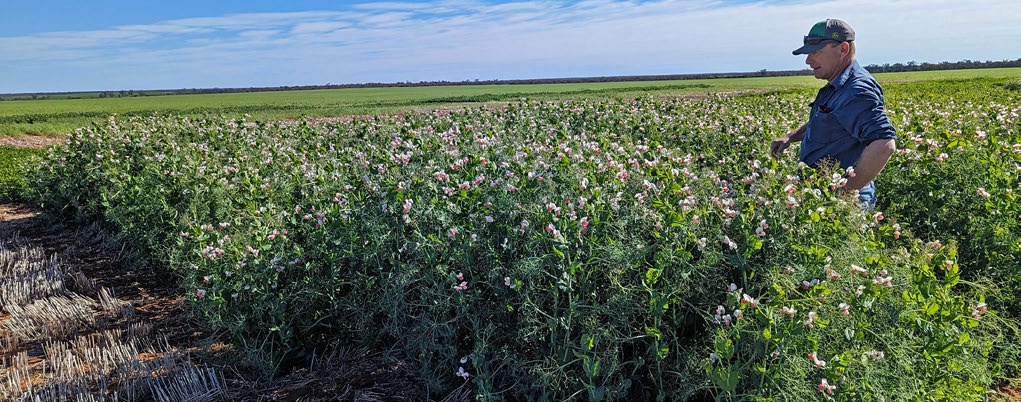
Vetch
- Vetch grain yield was affected by both sowing time and variety with grain yield up to 1.5 t/ha. The grain yield of vetch sown mid–late April was 0.2 t/ha higher than vetch sown in mid May. Volga (1.2 t/ha) and Timok (1.3 t/ha) produced higher grain yield than Studenica (1.1 t/ha)
- Peak biomass was 7.5 t/ha when sown mid April, however there was a penalty for delayed sowing with 3.8 t/ha less biomass produced from vetch sown in mid May.
- Biomass was also measured at the start of podding to determine dry matter when vetch would be cut for hay. Biomass was assessed on 13 September for Timok sown mid and late April (SD1 and SD2), and 21 September for Timok sown mid May (SD3). Vetch sown mid April had ‘hay cut’ dry matter of 5.8 t/ha while mid May was 1.7 t/ha less at 4.1 t/ha.
Faba Beans
- Faba bean grain yield was maximised by early sowing with 1.8 t/ha for PBA Marne sown mid April (SD1). There was 0.25 t/ha penalty for delaying sowing to 27 April (SD2), and a further 0.2 t/ha penalty delaying to mid May (SD3). Mean grain yield was 0.45 t/ha higher from sowing in
mid April compared to mid May. - The average grain yield of PBA Marne across all sowing dates was 1.5 t/ha, higher than PBA Samira and PBA Bendoc which both averaged 1.3 t/ha.
- Faba bean biomass production was also improved by early sowing, with almost 6 t/ha of dry matter grown with a mid April (SD1) sowing. Peak biomass was reduced by 1.5 t/ha when sowing was delayed to 27 April (SD2), with a further reduction of 0.8 t/ha when sowing was delayed to
mid May (SD3).
Chickpea
- Chickpea grain yield was not responsive to sowing time and varieties were not significantly different. The average grain yield across all sowing times and varieties was 1.2 t/ha. Later sown chickpeas possibly benefited more than early sowing times from 40 mm of rain on 4 October.
- Sowing time influenced biomass produced. Chickpeas sown on 17 April (SD1) produced 4.3 t/ha of dry matter, which decreased by 0.7 t/ha for 27 April (SD2) sowing, and a further 0.5 t/ha for 15 May (SD3) sowing.
Trial details
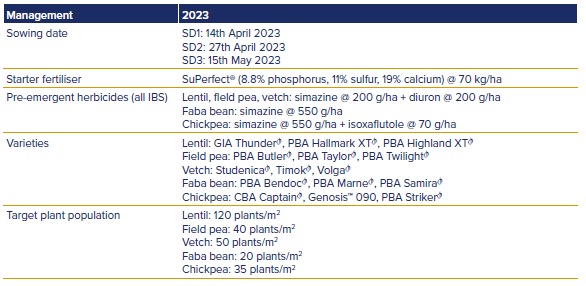
Results



